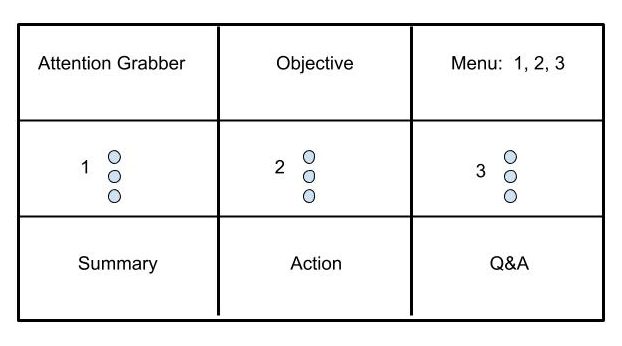Presenting is about transformation–not information. We present to influence, to make a difference, to change behavior, or at least to make the audience think or do something that it would not have otherwise done.
Most presentations suffer from two paralyzing problems:
- no clear purpose or benefit for the audience, and
- too much information.
So let’s make this a tidy package. Let’s get it done in three easy steps.
Purpose: Be sure you know why you are speaking to this audience at this moment. The acid test for your objective is:
- Complete the following sentence in six words: In the next 15 minutes I would like to show you how/why…”
- What concrete measurable action do you want your audience to take as a result of listening to you? If you are not clear, your presentation will fall short. Your purpose is your objective plus your desired action.
Plan: If you try to include all the evidence that supports your points you will confuse or bore your audience. Guard against the curse of knowledge by writing down everything you might wish to say and then cross things out and group them till you have three main bucket titles. Everything has to fit into those buckets. If it doesn’t, get rid of it.
Choose a strong image – physical or verbal – to act as an attention grabber to begin your presentation with impact and set the tone. Avoid relying on slides.
When you have your attention grabber, your objective, your desired action and your three evidence buckets, populate The Tidy Message Matrix, below. The three boxes along the middle are where you write your topic names and three key pieces of supporting evidence for each of your points. Reading it left to right, top to bottom gives you your running order.

Now you can consider PowerPoint. Your audience can either look at your slides or listen to you, but they can’t do both at the same time. If you want them to understand your data, give it to them in a written format they can use. Perhaps you can email it to them as you finish your presentation, although you would need their email addresses to do that.
The Q&A box is the audience’s chance to ask you questions and your opportunity to tell them as often as possible what matters–that is, by returning to your evidence.
Performance: Use body language, gesture, eye contact and your strong voice to deliver your points with maximum impact. The key is practice, practice, practice–ideally with reliable feedback from a trusted individual. The audience is sovereign. If at the end they don’t buy into you and your idea, your precious opportunity to influence will have been lost.
This article was mostly written by ArcMedia | International.
